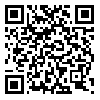Volume 23, Issue 6 (2-2025)
TB 2025, 23(6): 64-77 |
Back to browse issues page
Download citation:
BibTeX | RIS | EndNote | Medlars | ProCite | Reference Manager | RefWorks
Send citation to:



BibTeX | RIS | EndNote | Medlars | ProCite | Reference Manager | RefWorks
Send citation to:
Reisi R, Moghimian M. Predicting Nomophobia Based on Early Maladaptive Schemas Considering Depression, Anxiety and Stress in the Youth. TB 2025; 23 (6) :64-77
URL: http://tbj.ssu.ac.ir/article-1-3718-en.html
URL: http://tbj.ssu.ac.ir/article-1-3718-en.html
Najafabad Branch, Islamic Azad University , mmoghimian243@gmail.com
Abstract: (634 Views)
Introduction: Excessive use and mental preoccupation with mobile phones is one of the behavioral problems among young people that can be accompanied by negative psychological consequences, including cell phone phobia in the form of fear combined with anxiety caused by being away from it. In order to design effective interventions, it is necessary to identify the factors that predict and influence the occurrence of this phenomenon. This study aimed to predict cell phone phobia based on early maladaptive schemas with respect to depression, anxiety, and stress in young people.
Methods: This is a descriptive cross-sectional study of correlational type. The research population was young men and women aged 20-40 in Isfahan. Through a call on popular channels in virtual networks, young people with the inclusion criteria were invited to participate in the study. Based on Morgan's table, 384 people were selected from the users of virtual networks between October and December 2024 based on the inclusion criteria and answered the demographic characteristics questionnaire, Yildirim's nomophobia, Young's early maladaptive schemas, and DASS version 21. The data were analyzed using AMOS version 23 and SPSS version 21 software.
Results: Structural equation modeling showed that nomophobia can be predicted based on early maladaptive schemas with respect to stress, anxiety, and depression in young people. These schemas were positive and significant predictors of nomophobia (p=0/001). Depression (p=0/001), anxiety (p=0/001), and stress (p=0/001) were positive and significant predictors of nomophobia. There was a significant relationship between schemas and depression (p=0/001,r=0/29), anxiety (p=0/001,r=0/27), and stress (p=0/001,r=0/28). The schemas of cut-off/exclusion and inhibition had the greatest and other-orienteers the least effect on nomophobia.
Conclusion: The results of the present study show that early maladaptive schemas, mediated by stress, depression, and anxiety, predict nomophobia in young people. Given the greater impact of cut-off/exclusion and inhibition schemas, it is necessary to identify these schemas in young people and provide them with health interventions. However, larger studies should be conducted to generalize the results.
Conflict of interest: The authors declared no conflict of interest.
Methods: This is a descriptive cross-sectional study of correlational type. The research population was young men and women aged 20-40 in Isfahan. Through a call on popular channels in virtual networks, young people with the inclusion criteria were invited to participate in the study. Based on Morgan's table, 384 people were selected from the users of virtual networks between October and December 2024 based on the inclusion criteria and answered the demographic characteristics questionnaire, Yildirim's nomophobia, Young's early maladaptive schemas, and DASS version 21. The data were analyzed using AMOS version 23 and SPSS version 21 software.
Results: Structural equation modeling showed that nomophobia can be predicted based on early maladaptive schemas with respect to stress, anxiety, and depression in young people. These schemas were positive and significant predictors of nomophobia (p=0/001). Depression (p=0/001), anxiety (p=0/001), and stress (p=0/001) were positive and significant predictors of nomophobia. There was a significant relationship between schemas and depression (p=0/001,r=0/29), anxiety (p=0/001,r=0/27), and stress (p=0/001,r=0/28). The schemas of cut-off/exclusion and inhibition had the greatest and other-orienteers the least effect on nomophobia.
Conclusion: The results of the present study show that early maladaptive schemas, mediated by stress, depression, and anxiety, predict nomophobia in young people. Given the greater impact of cut-off/exclusion and inhibition schemas, it is necessary to identify these schemas in young people and provide them with health interventions. However, larger studies should be conducted to generalize the results.
Conflict of interest: The authors declared no conflict of interest.
Type of Study: Research |
Subject:
Psychology
Received: 2024/09/2 | Accepted: 2024/12/11 | Published: 2025/02/28
Received: 2024/09/2 | Accepted: 2024/12/11 | Published: 2025/02/28
Send email to the article author
| Rights and permissions | |
 |
This work is licensed under a Creative Commons Attribution-NonCommercial 4.0 International License. |







